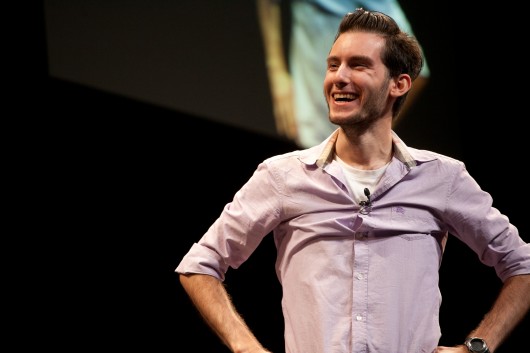Throughout the course of his talk, he continually encouraged us to always remain curious, and to playfully reimagine the world around us. This is how George approaches many of his projects. In college, bored by the monotony of final exams, he created an “Exammer Slammer” in the dining hall where other students were encouraged to “slam dunk” into a chicken wire column whenever they completed an exam. In doing so, he transformed an experience of boredom and dread into one that rewarded people with fun. The joy he saw others experience when interacting with this inspired him to start making work that could do this for everyone.

George Zisiadis
Interactive Artist, Designer (San Francisco)
He talked about discouragement when working on projects whose sole intent is joy. After collecting a series of personal sketches about quirky things to do in a city, he was able to publish a book of them.
At the time it was great, but it was disheartening in future projects because it forced him to think about whether what he was creating could be made into a book or into something that would sell. If it didn’t it became hard to justify creating it. The drone, for example, cost $400, which seemed like an excessive amount to spend on something that may not necessarily lead to client work. He beat himself up over this for a little while, but ultimately came to the conclusion that he would go forward with this project and others, because at the end of the day, “sometimes things are beautiful just because they are absurd.”
Text — Jack Koloskus — @koloskus























